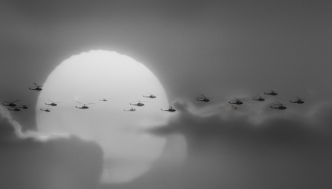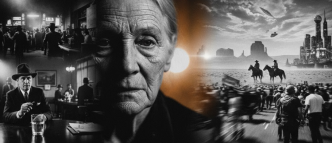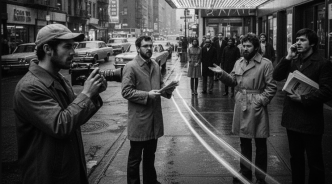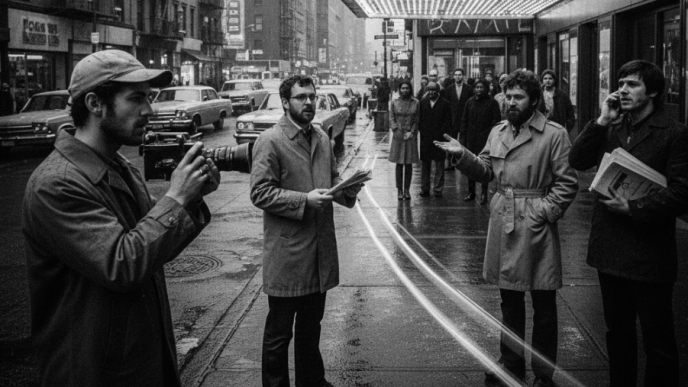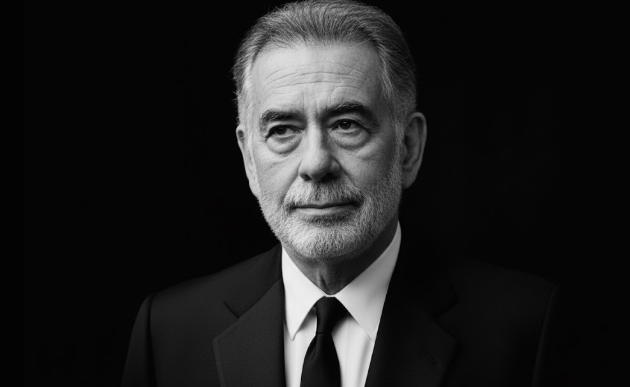Francis Ford Coppola’s Apocalypse Now (1979) is a film that assaults the senses, a hallucinatory journey into the horrors of war that is as much an auditory experience as it is a visual one. While Vittorio Storaro’s painterly cinematography won an Academy Award, it was the film’s revolutionary soundscape, orchestrated by Walter Murch, that plunged audiences directly into the characters’ fractured psyches. For his work, Murch was the first person in history to be credited with the title “Sound Designer,” a term he coined to describe a role that went far beyond simply mixing audio.
He treated sound not as a supplementary layer, but as a fundamental narrative and psychological tool. By pioneering the 5.1 surround sound format, blending hyper-realism with surreal distortion, and using sound to map the protagonist’s mental collapse, Murch created a three-dimensional world of sonic madness that forever changed the art of sound in cinema.
The Birth of 5.1: Inventing an Immersive Soundscape
Before Apocalypse Now, most films were mixed in mono, and stereo was still a novelty Murch himself disliked. However, Coppola’s vision for the film was one of total immersion. He initially wanted a quadraphonic mix, with speakers in all four corners of the theater, to fly the sounds of helicopters around the audience. Recognizing this wouldn’t work in large theaters, Murch collaborated with Dolby to develop a new format: a stereo surround system with three channels in the front (left, center, right), two surround channels in the back, and a dedicated channel for low-frequency effects. This six-track system, which Murch and his team had to design a methodology for from scratch, became the precursor to the 5.1 surround sound that is now the industry standard.
This new format gave Murch an unprecedented ability to “decorate” the three-dimensional space of the theater with sound. The movement of helicopters, a crucial sonic motif, could now be perfectly mapped to the speaker placement, creating the terrifyingly realistic effect of them circling the audience. This technical innovation was not just a gimmick; it was essential to creating the film’s overwhelming and disorienting atmosphere.
Subjective Sound: The Opening Scene as Overture
Murch’s most profound innovation was his use of sound to represent a character’s subjective psychological state. The film’s legendary opening scene is a masterclass in this technique. It begins not with the sounds of war, but with the surreal, synthesized thumping of helicopter blades mixed with The Doors’ “The End.” The sound of the blades slowly morphs and blends with the diegetic sound of a ceiling fan in Captain Willard’s Saigon hotel room, visually linking the trauma of the war with his present state of mental collapse.
This blending of diegetic and non-diegetic sound, of memory and reality, immediately establishes that we are not objective observers; we are inside Willard’s head, experiencing the war as a projection of his tormented mind. Murch uses this “psychic dimension” of sound throughout the film, distorting and layering audio to reflect the characters’ descent into madness.
The Pulse of the Soundtrack: From Mono to Surround
Murch was terrified of overusing the new surround sound palette and reminding the audience they were in a movie theater. To avoid this, he created a master chart that meticulously planned the sonic texture of the film, creating what he called an “organic pulse” by strategically shifting between mono, stereo, and full 5.1 surround. He thought of the surround channels as a “blanket” that could be pulled over the theater and then allowed to “melt away like snow.”
This is perfectly demonstrated in the Playboy bunny sequence. The scene begins with the sound coming only from the front channels, but as the chaos escalates and the soldiers rush the stage, the sound “opens up” into the surrounds, enveloping the audience in the frenzy. Later, as the film moves further upriver and reality begins to fray, the sound becomes less naturalistic. During the chaotic battle at the Do Lung Bridge, Murch began substituting realistic sounds with surreal ones—machine-gun fire becomes the sound of rivet guns, reflecting the drug-addled perspective of the character Lance. This dynamic use of the soundscape mirrors the narrative’s journey from a semblance of order into total, hallucinatory chaos.
Conclusion: The Architect of Audio
The sound design of Apocalypse Now is a landmark achievement that elevated the role of sound in filmmaking from a technical necessity to a vital art form. Walter Murch’s pioneering work in surround sound and his sophisticated use of subjective, psychological audio created an immersive and deeply unsettling experience that was integral to the film’s power. He didn’t just add sound to images; he used sound to build worlds, explore the inner lives of his characters, and manipulate the audience’s emotional state with the precision of a composer. In doing so, he truly became the first “Sound Designer,” an architect of audio whose influence is heard in every immersive film that has followed.
Read our full analysis of Coppola’s Apocalypse Now — a descent into the madness of war →
Check also: The Madness and Hypocrisy of War →

Dario Loce is the founder and editor of Celebrimous. He is a lifelong film enthusiast and the author of several locally-published books on cinema history and analysis. His passion is deconstructing the “how” and “why” of filmmaking, from the director’s vision to the editor’s cut. When not lost in a classic film, he’s usually walking through the city, replaying scenes in his mind like unfinished stories.
